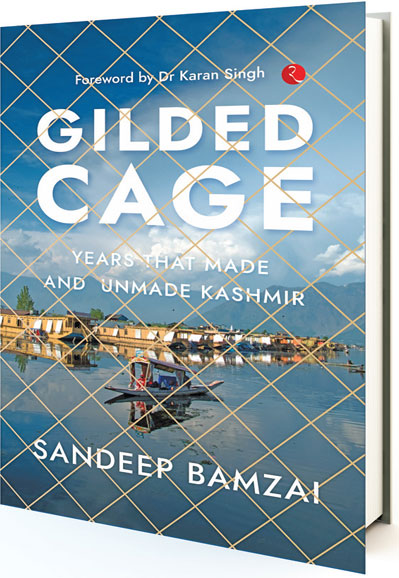How anxiety about Russia, made the US dabble in J&K. An extract
Sandeep Bamzai
 Once the Kashmir Assembly under Bakshi’s leadership voted for Kashmir’s accession to India on 15 February 1954, Nehru concluded that no plebiscite was needed, as the people’s representatives had spoken.
Once the Kashmir Assembly under Bakshi’s leadership voted for Kashmir’s accession to India on 15 February 1954, Nehru concluded that no plebiscite was needed, as the people’s representatives had spoken.
That decision of the J&K Constituent Assembly was extraordinarily bold, since it openly defied the then omnipotent UNSC. Some 61 months earlier, the UNSC had been manipulated by scheming Britain into passing a resolution whereby the accession of J&K to either India or Pakistan was to be decided only by a plebiscite, although the state had already legally and morally acceded to India through the Instrument of Accession in terms of Britain’s India Independence Act, 1947. It is noteworthy that India’s case in the UN was predicated on the removal of infiltrators from J&K and not about the legality of the accession. Sheikh Abdullah himself stated at the UNSC’s meeting number 241 held on 5 February 1948: ‘Whether Kashmir has lawfully acceded to India… is not the point at issue.’ He appealed that the UNSC ‘should not confuse the issue.’ He also reminded the council that when accepting J&K’s accession to India, its PM had given the assurance that once the country is free from the raiders, marauders and looters, this accession will be subject to ratification by the people.
That ratification by the people demanded that a constitution be drafted—not by a maharaja (as was done through the Jammu and Kashmir Constitution Act, 1939) but by the people, of the people and for the people. And since Clause 7 of the Instrument of Accession of 1947 did not commit J&K to adhere to the Indian constitution, then being debated in Delhi, a J&K Constituent Assembly was set up through democratic elections, which were witnessed by international observers and conducted on the basis of universal adult franchise—never mind that Sheikh Abdullah’s National Conference party was the only one in the fray with its insignificant rival, the Praja Parishad, deciding to stay away.
A flinty Nehru—who always stood by Abdullah the patriot and even banished Maharaja Hari Singh from the state at the behest of Abdullah so that he could have a freer hand while governing J&K—finally had to understand that Sher-i-Kashmir was at best a localist and an inward-looking leader who could not see beyond the narrow prism of Kashmir Valley. Burdened with a Jammu, which he seemingly could not come to grips with, he chose the easier option of engaging with superpower, namely the US, to exercise his dream of an independent Kashmir, which shared frontiers with five nations as the crown jewel of India. In such a frame of mind, a full integration with India was clearly inimical to Abdullah.
Pertinently, even when Kashmir was needlessly internationalized by India at the behest of Lord Mountbatten, the UN was obsessed with military men to solve the problem. When the ceasefire was instituted on 1 January 1949 after a prolonged war, the UN chose a Belgian, General Maurice Delvoie, as military adviser for the UNCIP. By February, UN Secretary-General Trygve Lie sent 36 military observers—17 from the US, six from Mexico, five from Belgium, four from Canada and four from Norway. In between, there was General Andrew McNaughton, a Canadian, as UNSC president, who dabbled in Kashmir affairs. The original choice for chief plebiscite administrator was General Walter Bedell Smith, who fell ill and was replaced by Fleet Admiral Chester W. Nimitz. Incidentally, General Smith was to later become director of the Central Intelligence Agency.
At one point, even General Dwight D. Eisenhower was in the hunt for the mediator’s position, a position which was finally taken up by Senator Frank Graham. The US always subliminally had an interest in Kashmir. Robert Trumbull, writing as far back as 28 October 1947 in The New York Times, had said: There is sentiment in Ladakh for independence and that such fragmentation of Kashmir is what India wishes to avoid in this strategic state next door to Russia.’ The following day, Trumbull wrote something even more damaging: ‘India officials quite frankly believe that possession of Kashmir is vital to the security of India. Some high government sources interviewed today were thinking about the Soviet Union, which touches Kashmir at Gilgit, at the state’s northwest tip.’
Geostrategically, Kashmir’s importance is not lost on anyone. While American interest died down after the winding down of the issue at the UN, at the very height of the Cold War, it surfaced in its most vile and obnoxious form. With the 1965 India-Pakistan conflict already a page in history, a fresh American initiative was launched for the state. US state Department troubleshooters were trying to orchestrate a new campaign to test the fertile waters of Kashmir. Known as the Puerto Rican Formula, the State Department began to peddle it as the new elixir.
GILDED CAGE: YEARS THAT MADE AND UNMADE KASHMIR
Sandeep Bamzai
Rupa Publications India Pvt. Ltd, Pg 136, Rs 395

